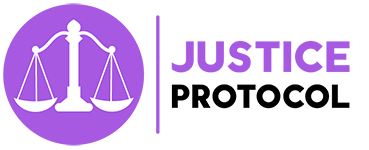Some might be surprised by how life-changing something as seemingly minor as a slip and fall incident can be. A few seconds and a few feet can be the difference between you going about the rest of your day as usual or suffering days, weeks, years, or even a lifetime of pain.
Additionally, a slip and fall injury can become costly if it results in an injury. Medical bills can be expensive. Not only are you paying for typical doctor’s office visits, but also diagnostics such as X-rays or MRIs, rehabilitation activities like physical therapy, and, in extreme cases, possibly even procedures like surgery. Depending on the severity of the injury and how long it affects the victim, the out-of-pocket medical costs can be extensive.
However, other costs can arise from a slip and fall injury that aren’t as obvious. For example, an injury may cause the victim to miss work or experience a loss of productivity at their job. They also could face pain and suffering that interferes with their enjoyment of life and their ability to participate in regular activities they enjoy.
These are just some of the reasons why slip and fall injuries often result in personal injury lawsuits. Luckily, with a law firm like Burnett & Williams — one of the leading personal injury practices in the state of Virginia — on your side, they can help you navigate the complexities of a personal injury lawsuit.
Understanding negligence in slip and fall incidents
Ultimately, whether or not a victim has a solid slip and fall personal injury case in Virginia comes down to the concept of negligence. “An injury must be the result of negligence, not just a simple accident, for there to be liability,” explains C. James Williams III, Principal at Burnett & Williams. “In an accident, there is no fault because unforeseen circumstances or acts of God caused the injury, rather than the property owner’s action or inaction. Negligence requires there to have been a duty of care on the part of the property owner, and for that duty of care to have been breached.”
Generally speaking, Virginia law requires that property owners maintain their property in a “reasonably safe” condition for people invited onto the property. This includes both businesses and their commercial property (such as stores) and individuals and their personal property (such as homes). Although determining liability is often complex, there are certain examples of negligence that make liability more clear-cut.
“For example, if a shopkeeper has recently mopped their floors and fails to put up a wet floor sign, they are creating a hazard and failing to take the appropriate steps to protect their customers,” says Williams. “Especially considering that the gloss on commercial floors often makes it difficult to tell whether a surface is wet, the customer may not realize there is a hazard, which could create a strong case for liability against the store.”
Indeed, the most obvious example of negligence on the part of a property owner is the knowledge of unsafe conditions and a failure to take action. “If a property owner is aware that a hazard exists and has not taken steps to rectify it, this constitutes clear negligence,” Williams adds. “For instance, if an inspection identified the hazard and the property owner didn’t fix it, the property owner could be held liable. A past injury case resulting from the same hazard can also indicate that the property owner was aware of the danger and failed to address it.”
What to do after a slip and fall
So, what should an individual do after they are the victim of a slip and fall injury? A few steps that you should take include:
- Document the scene and injury: Always take photos of the scene and the injury as soon as possible because images and footage of the hazard can serve as objective evidence. If you fail to take pictures and the property owner repairs or remedies the hazard and claims it was not there at the time of the incident, it becomes much harder to prove. Additionally, time-stamped images of the injury show that the injury occurred during the incident, not afterward.
- Keep a detailed injury journal: Keep a detailed injury journal that clearly outlines the events of the incident and the circumstances that led up to it. Note the date and time of the incident as precisely and exactly as possible, the details of the location where it happened, a description of the hazard, and injuries that were sustained. In the days following the incident, continue documenting your injury’s progression. Is there new pain? Swelling? Has your daily life been interrupted? Make sure to keep track of these developments.
- Seek medical care: Even if you think you’re alright, it’s important to seek medical attention right away. Slip and fall incidents can cause “invisible” injuries such as concussions, sprains, or whiplash that you might not be able to identify on your own, but can be diagnosed and treated by a doctor. If you don’t get medical care but one of these invisible injuries emerges later, it might be too late to make a strong case for causality.
In many cases, it is also advisable to contact a personal injury attorney. “Insurance companies will often attempt to settle quickly and give you far less than your case is worth,” Williams notes. “This is a preferred tactic of insurance companies — to get to you before you get to a lawyer — as the playing field isn’t level, given how much more the insurance knows compared to the injured person. A skilled personal injury lawyer will work with you to ensure that the property owner is held accountable and that you receive the compensation you deserve for your medical bills, lost income, and pain and suffering.”

